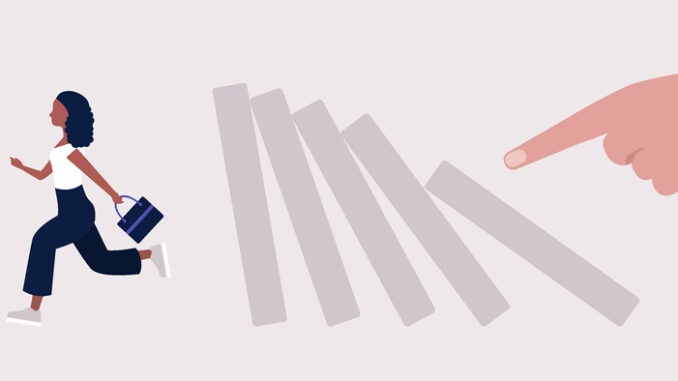
Gillian Arnold, author of Women In Tech: A practical guide to increasing gender diversity and inclusion, discusses how leaders can spot the signs of micro aggressions
Micro-aggressions, micro-inequities, micro-assaults, micro-behaviours – these terms are being used more and more, so perhaps an explanation is due. What impact and effect do they have? Surely the effect would be small? or micro? The impact is subtle but can cause low self-esteem, impostor syndrome – and sometimes worse. It’s important to understand them and how they work on our self-belief.
Way back in the 1970s, there were a couple of researchers at the Massachusetts Institute of Technology (MIT) who started talking about micro-aggressions (used by Chester Pearce) and micro-inequities (coined by Mary Roe). Fundamentally, they were talking about the same thing; those subtle (and sometimes not so subtle) digs at you that put you down.
They can be so subtle that you may not even consciously notice them. They may be verbal, or behavioural, or they may even be embedded in the working culture or ‘system’. They may be unintentional, or they might be just plain nasty! They may be racial, or gender-based, or they might target your class or sexual orientation.
Wherever there is a minority, they will experience micro-behaviours more, and where there is a melding of many under-represented characteristics – for example, a working class black woman – then there is likely to be a multiplier effect.
Some examples to make the point
A really well known example of a verbal micro-inequity aimed at women is ‘Calm down dear’. The implication here is that the woman’s concern (which is being voiced) is minimal, unworthy and trivialised by the speaker. This phrase is well known, but how many times have people said, ‘Surely not’, or ‘That can’t be true’, or ‘That’s never right’. The more your opinion is doubted, the more you will doubt yourself and, lo and behold, ten years down the line, you doubt your abilities.
As for non-verbal examples, there are plenty of them. The individual who makes eye contact with everyone in the room but you – they are doing a micro-behaviour at you! They may be doing so entirely unaware that they are doing it, or of the impact of their selectivity. Research done by the Lean In team in their annual Women in the Workplace Report (2022 edition) suggests that female leaders are twice as likely as men leaders to be mistaken for someone more junior; this can be amusing the first time it happens, but the second time, and the third time, have you wondering whether you really belong in your senior role. You question what it is about your appearance that makes people read ‘junior’, not ‘leader’.
Another non-verbal micro behaviour is when someone steals your idea at a meeting, or claims your work as their own. You want to shout out about the injustice, but you don’t want to appear trivial (because they might ask you to ‘Calm down dear’). Lean In research says that 37% of female leaders have had a co-worker get credit for their idea, compared to 27% of male leaders. It’s no wonder that a woman might feel more daunted by these cultural behaviours than a man – they will experience many more instances of them.
Race will bring a double helping of micro-behaviours for women. A black woman is much more likely to have her opinion doubted than a white woman, and a white man will barely notice that his opinion is doubted, it happens so infrequently. According to the 2022 Lean In report, 55% of black women leaders will experience having their opinions doubted, versus 39% of white women and only 28% of all male leaders say that they experience this. The damage to one’s self-esteem, when this happens repeatedly, can be enormous, and can lead to permanent issues.
When people become aware of micro-behaviours, they can start to take action – both for their own sakes, and as allies, watching out for micro-behaviours aimed at others. This needs some thought from each of us about how to usefully tackle the slights aimed at ourselves and others.


Be the first to comment